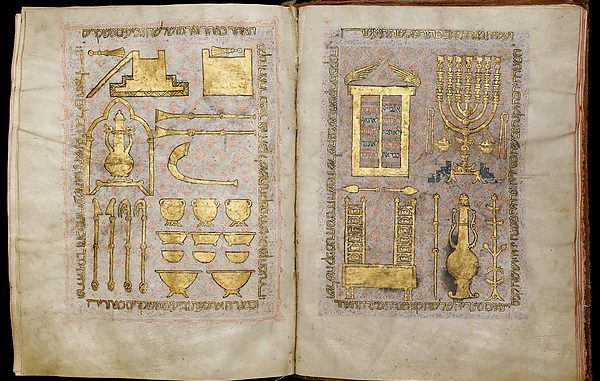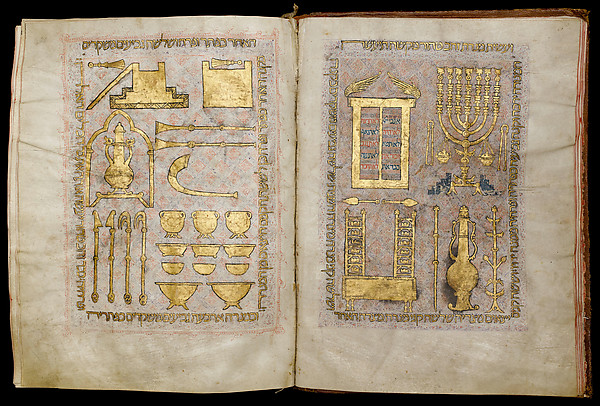
The Metropolitan Museum of Art has a new exhibit about Jerusalem called Jerusalem 1000 – 1400: Every People under Heaven:
Beginning around the year 1000, Jerusalem attained unprecedented significance as a location, destination, and symbol to people of diverse faiths from Iceland to India. Multiple competitive and complementary religious traditions, fueled by an almost universal preoccupation with the city, gave rise to one of the most creative periods in its history.
This landmark exhibition demonstrates the key role that the Holy City played in shaping the art of the period from 1000 to 1400. In these centuries, Jerusalem was home to more cultures, religions, and languages than ever before. Through times of peace as well as war, Jerusalem remained a constant source of inspiration that resulted in art of great beauty and fascinating complexity.
This exhibition is the first to unravel the various cultural traditions and aesthetic strands that enriched and enlivened the medieval city. It features some 200 works of art from 60 lenders worldwide. More than four dozen key loans come from Jerusalem’s diverse religious communities, some of which have never before shared their treasures outside their walls.
Diana Muir Appelbaum reviews the exhibit. Excerpts:
The curators [present] a soft-focus version of medieval Jerusalem as a city shared equally by Muslims, Christians and Jews, with the differences among them no more significant than the choice of whether to make falafel with fava beans or chickpeas. Imposing such a narrative requires a major elision of reality.In one display case, a copy of a history of the First Crusade by William of Tyre is opened to show images of the coronation of Queen Melisende and her consort Fulk in Jerusalem. It is paired with a handsomely illuminated Quran. One of a number of magnificent Qurans on exhibit, it conveys the idea that the Quran, like the Bible, contains material about Jerusalem. The Quran, however, never mentions Jerusalem.
The curators have my sympathy. Given that Jewish objects related to Jerusalem in these centuries consist largely of manuscripts, and recognizing the advantages of displaying at least a sample of the enormous number of splendidly illustrated medieval Christian books about Jerusalem, the curators needed to find a type of Muslim text that appears not to exist.
‘Umra certificate The most interesting Muslim manuscript on display with a connection to Jerusalem is a pilgrimage certificate with folk art illumination testifying that a man named Sayyid Yusuf bin Sayyid Shahab al-Din Mwara al-Nahri went as a pilgrim to Mecca, Medina, Karbala, Hebron and Jerusalem. There is also an alcove filled with illuminations of the Path of Paradise of al-Sara’I made for Abu Sa’id Mirza in 1466 that includes a delightful image of Muhammad astride his flying horse. Beautiful as they are, it is hard to say why they are included in an exhibition about medieval Jerusalem.
While the major failing of this exhibit is that the curators have built it around a false premise, it suffers also from a lack of focus apparent in the inclusion of many objects with little or no relationship to the city.
Much of the time, however, the exhibit is so detached from Jerusalem as to make me wonder whether the curators, experts in medieval art, had ever visited Jerusalem or studied these faith traditions. Without some explanation of the sort, it is hard to understand the statement on a wall devoted to The Dome of the Rock and the Al Aqsa Mosque, that “At the southwest corner of the great esplanade that overlooks Jerusalem stands the Dome of the Rock.” The southwest corner is, of course, the location of Al Aqsa; the Dome of the Rock is at the center of the enormous platform. This may be an easily corrected mistake; what comes next is more problematic, because it reveals the ease with which a well-intentioned effort to produce a politically acceptable exhibition can lead instead to the distortion of fact.
In large letters, the text on the wall explains that the Dome enshrines a natural stone outcropping “variously understood as the site of Abraham’s sacrifice, the location of the tabernacle in the Temple of Solomon, and the point of departure for the Prophet Muhammad’s Ascent to Paradise.”“Abraham’s sacrifice” is an odd phrase, not in common use in English where the traditional phrase is “the binding of Isaac.” It appears to have been chosen to elide the distinctiveness of these faith traditions.
In the Jewish and Christian Bibles, Abraham was prepared to sacrifice Isaac, and Jews and Christians traditionally identify the location as the stone at the center of the Temple Mount in Jerusalem. Islam has a similar story, but the name of the son is not given in the Quran; in Muslim tradition Abraham is usually said to have been about to sacrifice Ishmael, and the location was the black stone in Mecca known as the kaaba.
The exhibit’s litany of “Abraham’s sacrifice, the location of the tabernacle in the Temple of Solomon, and the point of departure for the Prophet Muhammad’s Ascent to Paradise” is problematic in an additional way, because one of these things is not like the others, one of these things just doesn’t belong.
Muhammad’s ascension to Heaven and Abraham’s near sacrifice of his beloved son are legendary accounts. The location of the ancient Temple, by contrast, is an archaeological and historical fact. The curator responsible for the text may have attempted to stay just inside the bounds of accuracy by referencing the “Temple of Solomon.” The construction of a temple on this spot by a king named Solomon—as opposed to the later Temple built on the site by the exiles returning from Babylon—cannot be proven, which gives the text the uncomfortable appearance of what Stephen Colbert calls “truthiness”—a very different thing from truth.
The ‘Umra certificate pictured above is the one and only piece of pre-19th century Islamic art depicting Jerusalem I have ever seen, and it is part of a depiction of Mecca, Medina, Karbala and Hebron.
We have lots of ideas, but we need more resources to be even more effective. Please donate today to help get the message out and to help defend Israel.



Leave a Reply